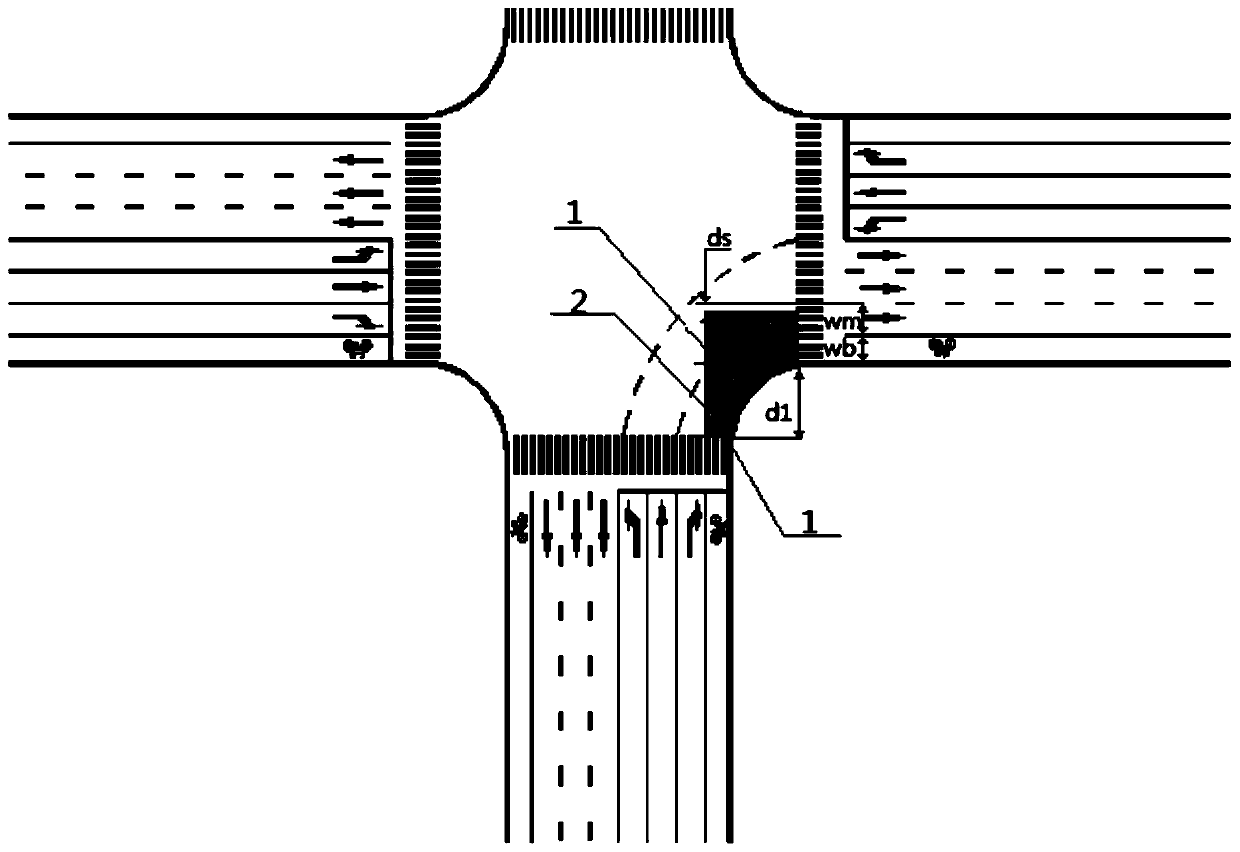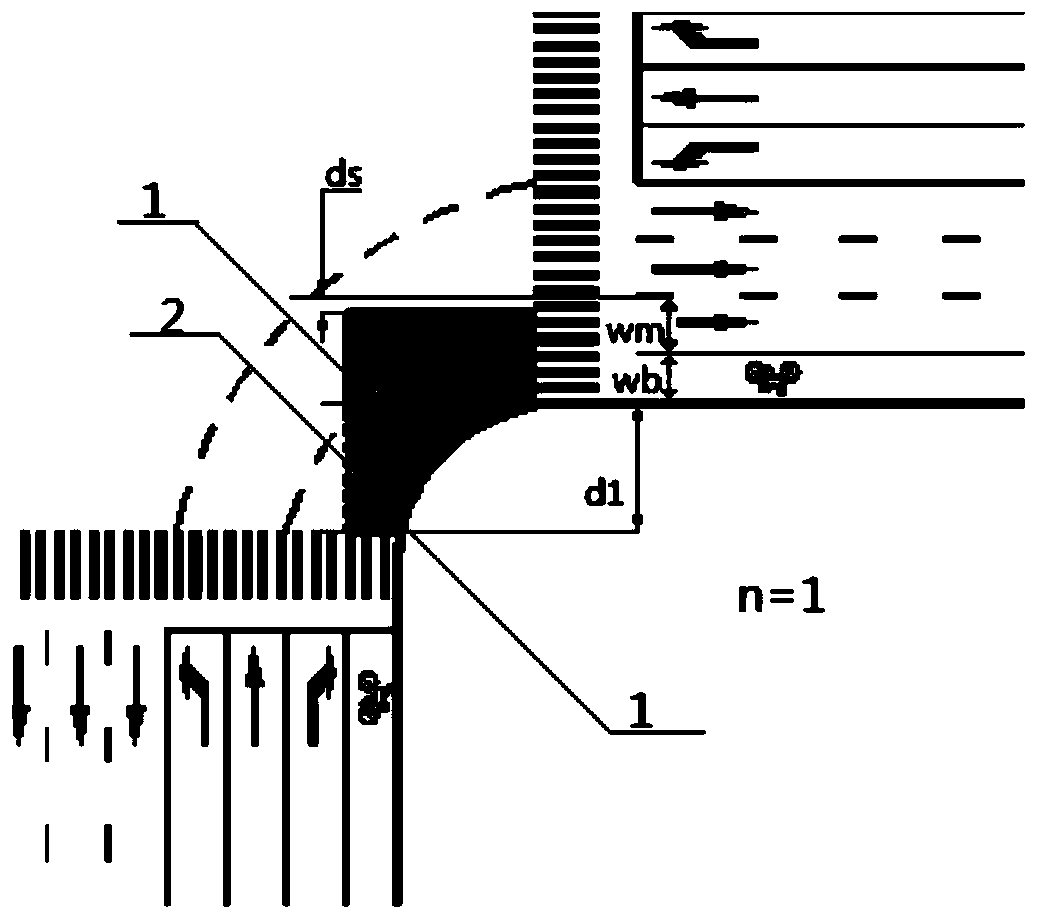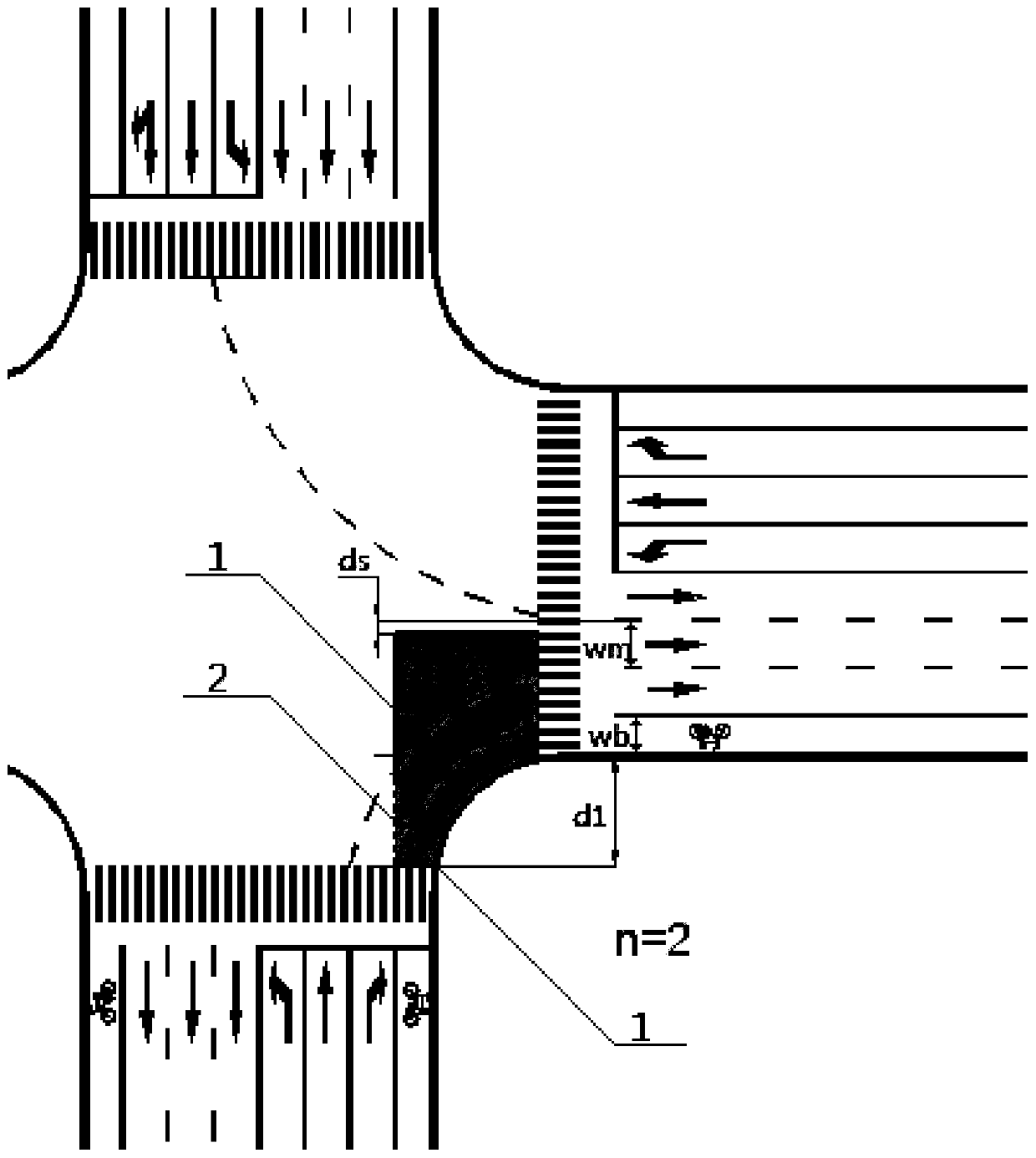Method for designing color non-motor vehicle waiting area based on slow-running priority
A non-motor vehicle and design method technology, applied in the direction of geometric CAD, can solve the problems of low universality, hidden dangers, motor vehicle congestion, etc., and achieve the effect of improving traffic capacity, reducing congestion problems, and reducing congestion problems
- Summary
- Abstract
- Description
- Claims
- Application Information
AI Technical Summary
Problems solved by technology
Method used
Image
Examples
Embodiment 1
[0062] Take Xincheng 2nd Road and Bocheng 3rd Road, Boxing County, Binzhou City, Shandong Province as an example. The intersection signal is a traditional four-phase, go straight first and then turn left, turn left at the east-west or north-south and turn left in the last few seconds of green light time, non-motorized vehicles in the north-south or east-west straight direction enter the waiting area. The steps to determine the length of the non-motor vehicle lane waiting area and the time for non-motor vehicles to enter the waiting area are as follows:
[0063] 1. First, measure the speed of left-turning vehicles at intersections, the width of non-motorized lanes and motorized lanes at each exit, and the distance between the outer edge of the pedestrian crossing and the edge of the road at the right exit. The measurement results are shown in Table 1. Investigate the current signal timing of the intersection, and the survey results are shown in Table 2.
[0064] Table 1 Geome...
PUM
 Login to View More
Login to View More Abstract
Description
Claims
Application Information
 Login to View More
Login to View More - R&D
- Intellectual Property
- Life Sciences
- Materials
- Tech Scout
- Unparalleled Data Quality
- Higher Quality Content
- 60% Fewer Hallucinations
Browse by: Latest US Patents, China's latest patents, Technical Efficacy Thesaurus, Application Domain, Technology Topic, Popular Technical Reports.
© 2025 PatSnap. All rights reserved.Legal|Privacy policy|Modern Slavery Act Transparency Statement|Sitemap|About US| Contact US: help@patsnap.com



